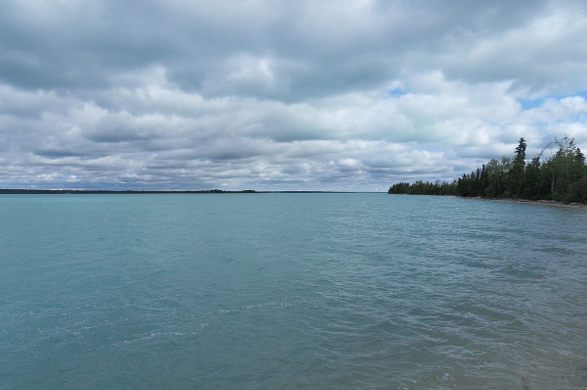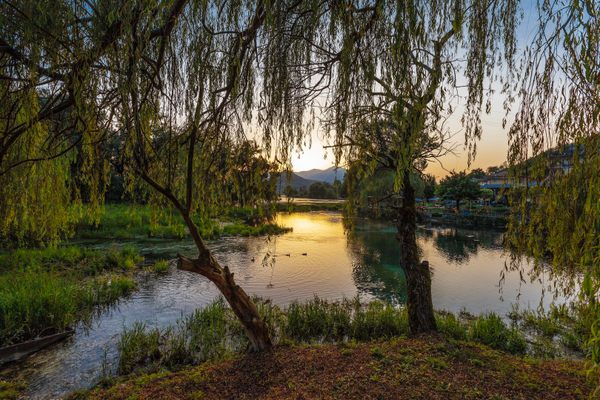AO Edited
Little Limestone Lake
The world's largest and most outstanding marl lake regularly changes color.
Little Limestone Lake is located in the northern Manitoba Lowlands, where temperatures can get as low as -40 degrees Fahrenheit but it often looks as though it belongs in the Caribbean. That’s not because it shares certain characteristics with the islands to the south, it’s because Little Limestone Lake is the world’s largest and most outstanding example of a marl lake.
Marl is a calcium carbonate-rich deposit. When temperatures are high, it’s formed as calcite and separates out of the water, creating crystals and leading to a milky turquoise hue. When it’s cold, the calcite dissolves, the marl decreases, and the water is perfectly clear.
The ever-changing levels in calcium carbonate-rich marl cause dramatic color changes in the lake. It can range from dull blue-grey to brilliant aquamarine to sky blue throughout the course of a day. The source of the calcite is underground limestone deposits—which have been slowly dissolving into the water for centuries.
The roughly 10,000-acre lake is part of Little Limestone Lake Provincial Park, a nonoperational park whose designation is meant to conserve and protect the area. It’s home to a variety of trees, plants, and wildlife, from bears and ducks to walleye and whitefish.
The landscape features sinkholes, caves, and other features typical of so-called “karst” (or limestone) geology—the result of the rock being eroded over time.
Know Before You Go
Located on Highway #6 near the Northwest tip of Lake Winnipeg, about 310 miles north of Winnipeg, and Grand Rapids (about 43 miles away). While the lake is open for a number of activities like hiking, camping, and boating, visitors should research and plan ahead, as the area is still rather remote.
















Follow us on Twitter to get the latest on the world's hidden wonders.
Like us on Facebook to get the latest on the world's hidden wonders.
Follow us on Twitter Like us on Facebook